Introduction
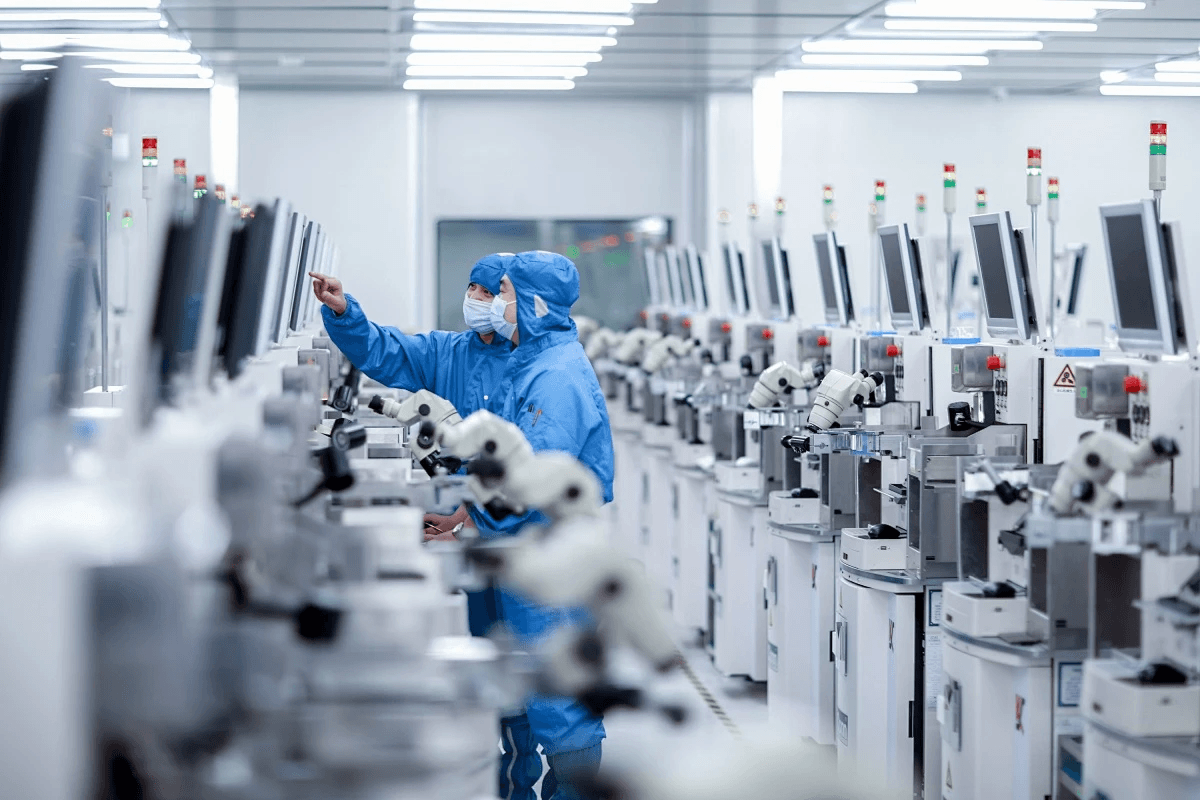
In the fast-paced world of electronics manufacturing, PCB conveyors play a crucial role in streamlining the printed circuit board assembly (PCA) process. These specialized conveyor systems are designed to transport PCBs efficiently between various stages of SMT (Surface Mount Technology) production lines. Understanding how PCB conveyors function and their impact on overall productivity is essential for any organization involved in SMT machines and PCB assembly.
Understanding PCB Conveyors in SMT Lines
PCB conveyors are integral components of SMT lines, specifically engineered to facilitate the smooth movement of PCBs during the assembly process. They ensure that printed circuit boards move seamlessly from one workstation to another, minimizing interruptions and enhancing workflow efficiency. By integrating various types of conveyor systems into their operations, manufacturers can optimize their PCB and assembly processes significantly.
The Importance of Speed Adjustment
One standout feature of modern PCB conveyors is the ability to adjust speed according to specific production needs. This flexibility allows operators to adapt quickly to varying workloads or different types of SMT PCB assemblies without compromising efficiency or quality. Speed adjustment not only enhances productivity but also reduces potential downtime caused by bottlenecks in the assembly line.
Overview of Bensun Technology
Bensun Technology has established itself as a leader in providing innovative solutions for PCB transport within SMT environments. Their intelligent shuttle conveyor systems offer advanced features designed for optimal performance, including programmable logic control (PLC) for precise operation management. With a commitment to quality and efficiency, Bensun's products are tailored to meet the diverse needs of manufacturers engaged in high-volume printed circuit board assembly.
What is a PCB Conveyor?
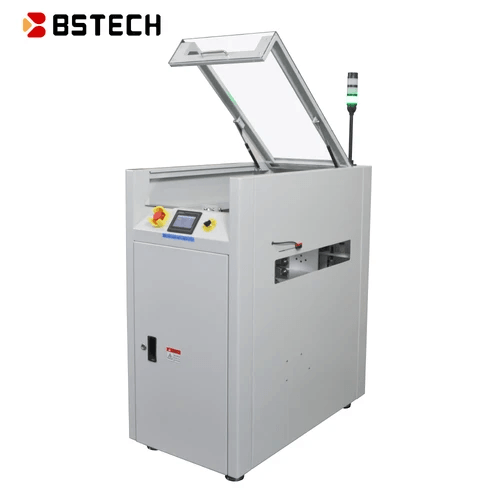
PCB conveyors are the unsung heroes of the printed circuit board assembly process, enabling seamless movement and handling of PCBs throughout various stages of SMT (Surface Mount Technology) production. These specialized conveyor systems play a crucial role in ensuring that SMT machines operate efficiently, reducing bottlenecks and enhancing overall productivity. By facilitating the smooth transport of PCBs, they help maintain an organized workflow in PCB assembly lines.
Definition and Functionality
A PCB conveyor is a mechanical system designed specifically for transporting printed circuit boards during the assembly process. Its primary functionality is to move PCBs between different machines or workstations within an SMT line, ensuring that each component is placed accurately and timely. With adjustable speed settings, these conveyors allow for synchronization with other SMT machines, optimizing the entire pcb assembly operation.
Key Components of PCB Conveyors
The essential components of a PCB conveyor include a frame, belts or chains for movement, drive motors, and control systems that regulate speed and direction. The frame provides structural support while maintaining stability during operation; belts or chains facilitate smooth transport of PCBs without causing damage to sensitive components. Additionally, advanced control systems enable precise adjustments to speed settings based on specific production requirements in pcb assembly.
Different Types of PCB Conveyors
There are several types of PCB conveyors tailored to meet diverse needs in SMT production environments. For instance, belt conveyors are popular for their simplicity and effectiveness in moving pcbs over short distances, while chain conveyors offer greater durability for heavier loads. Additionally, modular conveyors allow customization based on unique workflows within pcb and assembly operations—providing flexibility that enhances efficiency across various stages of the production line.
Benefits of Speed Adjustment in SMT Production
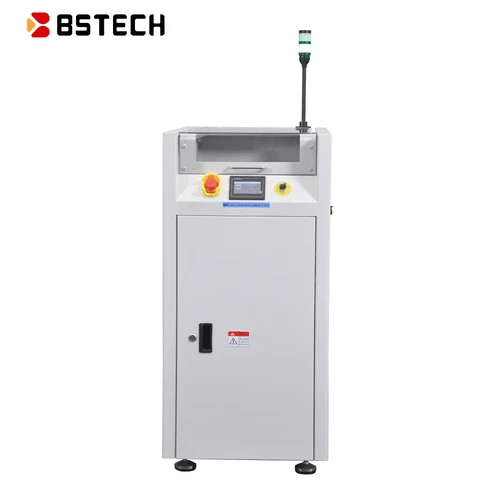
In the realm of PCB assembly, speed adjustment is not just an added feature; it’s a game-changer. The ability to finely tune the speed of a PCB conveyor allows manufacturers to optimize their production processes, ensuring that every component is placed with precision and care. When SMT machines operate at the right pace, they can significantly enhance overall efficiency, leading to higher throughput and better quality in printed circuit board assembly.
Enhancing Efficiency in PCB Assembly
Efficiency is the name of the game in printed circuit board assembly, and speed adjustment plays a pivotal role in achieving it. By allowing operators to modify the conveyor speed based on specific tasks or components being assembled, PCB conveyors help streamline operations and reduce bottlenecks. When SMT PCB assembly lines are running smoothly, manufacturers can meet tight deadlines without compromising on quality.
Moreover, adjustable speeds enable teams to adapt quickly to varying production demands or changes in design specifications. For instance, when working with different types of components that require unique handling times, having a flexible pcb conveyor makes all the difference. This adaptability ensures that each phase of assembly is executed efficiently while maintaining high standards for quality control.
Reducing Potential Downtime
Downtime can be a manufacturer’s worst nightmare—especially in high-stakes environments like SMT production where every second counts. Speed adjustment on pcb conveyors helps mitigate potential downtime by allowing for quick adjustments during unforeseen circumstances or equipment malfunctions. If an issue arises with an SMT machine or during printed circuit board assembly, operators can swiftly modify conveyor speeds to address the problem without halting operations entirely.
Additionally, incorporating adjustable-speed conveyors into your workflow means you can better manage maintenance schedules without disrupting production flow. Operators can slow down the conveyor during routine checks or repairs while keeping other parts of the line operational. This proactive approach not only minimizes downtime but also enhances overall productivity throughout the entire pcb and assembly process.
Tailoring Operations to Specific Needs
Every manufacturing environment has its own unique challenges and requirements—this is where speed adjustment shines as a crucial feature for pcb conveyors used in SMT processes. Tailoring operations according to specific needs allows teams to customize their workflows based on product characteristics or order volumes effectively. Whether it’s adjusting speeds for delicate components or increasing throughput for bulk orders, flexibility becomes key.
Furthermore, this adaptability extends beyond mere operational efficiency; it also improves employee satisfaction by empowering them with tools that facilitate their work processes effectively. Operators who understand how to manipulate speeds on their conveyor systems are better equipped to handle various scenarios encountered during pcb assembly tasks seamlessly. Ultimately, having this level of control over operations leads not only to enhanced performance but also fosters innovation within manufacturing practices.
Bensun Technology’s Intelligent Shuttle Conveyor
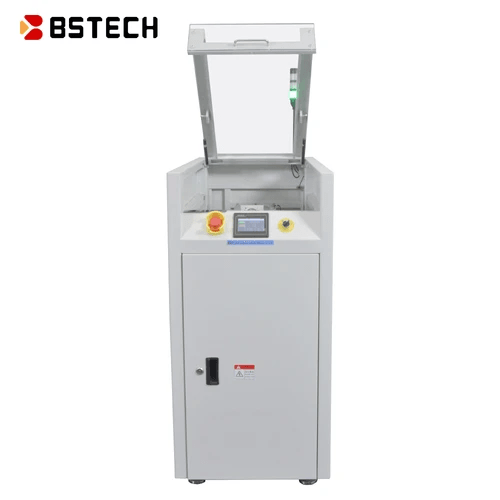
In the fast-paced world of PCB assembly, having the right tools can make all the difference. Bensun Technology's Intelligent Shuttle Conveyor models—PTK-350, PTK-460, and PTK-550—are designed to enhance efficiency in SMT lines. These conveyors are not just any ordinary conveyor PCB systems; they represent a leap forward in technology and adaptability.
Features of the PTK-350/460/550 Models
The PTK series is engineered with precision, boasting features tailored for optimal performance in printed circuit board assembly. Each model offers adjustable speed settings, allowing operators to fine-tune the pace according to specific production needs. Additionally, these models come equipped with sensors that monitor product flow and ensure smooth transitions between SMT machines, minimizing potential bottlenecks during PCB and assembly processes.
Moreover, their compact design allows easy integration into existing SMT PCB assembly lines without requiring extensive modifications. The versatility of these conveyors makes them suitable for various applications within the electronics manufacturing sector. With user-friendly interfaces and robust construction, Bensun’s Intelligent Shuttle Conveyors stand out as reliable partners in achieving efficient PCB assembly.
How PLC Control Enhances Operation
One of the standout features of Bensun's Intelligent Shuttle Conveyor is its integration with Programmable Logic Controllers (PLC). This advanced control system enables precise regulation of speed and operation parameters for enhanced performance in SMT machines. By automating many processes within the conveyor system, operators can focus on more critical tasks while ensuring that printed circuit board assembly runs seamlessly.
PLC control also allows for real-time monitoring and adjustments based on production demands or anomalies detected during operation. This capability significantly reduces downtime by providing immediate feedback and facilitating quick troubleshooting when issues arise within the conveyor PCB systems. As a result, manufacturers can maintain high productivity levels while ensuring consistent quality standards throughout their operations.
Benefits of ESD Anti-Static Design
In an environment where static electricity poses a significant risk to sensitive electronic components, Bensun’s ESD anti-static design is a game-changer for PCB assembly lines. Each model in the PTK series incorporates materials that dissipate static charges effectively, protecting both components and personnel from damage during handling processes. This feature is particularly crucial when working with SMT PCB boards that require careful attention to prevent costly defects or failures.
The ESD design not only enhances safety but also contributes to maintaining product integrity throughout the entire manufacturing process. By minimizing static-related disruptions, manufacturers can optimize workflow efficiency while adhering to strict quality assurance protocols associated with printed circuit board assembly operations. Choosing a conveyor equipped with ESD anti-static capabilities ensures that your investment aligns with industry best practices for electronic manufacturing.
Integrating with SMT Machines

Integrating PCB conveyors into SMT machines is crucial for a seamless printed circuit board assembly (PCBA) process. The compatibility of these conveyors with various SMT PCB assembly systems ensures that the flow of operations remains uninterrupted. By aligning the capabilities of PCB conveyors with the needs of SMT machines, manufacturers can enhance overall productivity and efficiency.
Compatibility with SMT PCB Assembly
The design of modern PCB conveyors allows them to work harmoniously with a range of SMT machines, facilitating efficient PCB assembly. Whether it's pick-and-place machines or reflow ovens, these conveyors can be tailored to fit specific requirements in the production line. This compatibility not only streamlines operations but also ensures that the entire SMT PCB board assembly process is executed smoothly without any hiccups.
Optimizing Workflow with Conveyor PCB Systems
Utilizing conveyor PCB systems can significantly optimize workflow in any electronic manufacturing environment. By strategically placing these conveyors throughout the production line, manufacturers can reduce bottlenecks and improve material handling during printed circuit board assembly. This optimization leads to increased throughput and a more agile response to changing production demands, allowing teams to adapt quickly while maintaining high-quality standards.
The Role of MES Docking in Efficiency
Manufacturing Execution System (MES) docking plays a pivotal role when integrating PCB conveyors into an SMT environment. This technology allows real-time data exchange between various components of the production line, enhancing coordination and decision-making processes during PCBA operations. With effective MES integration, companies can monitor performance metrics closely and adjust their conveyor systems accordingly, ensuring maximum efficiency in their printed circuit board assembly tasks.
Best Practices for Using PCB Conveyors

When it comes to maximizing the performance of your PCB conveyor systems, adhering to best practices is crucial. These practices not only enhance efficiency in PCB assembly but also ensure that your smt machines operate smoothly. By implementing these strategies, you can significantly improve the overall productivity of your printed circuit board assembly processes.
Regular Maintenance Tips
Regular maintenance is the backbone of a well-functioning PCB conveyor. Schedule routine inspections to check for wear and tear on key components such as belts, motors, and sensors; this will help prevent unexpected downtimes during critical pcb and assembly operations. Additionally, keeping the conveyor clean from dust and debris ensures optimal performance and prolongs its lifespan in your SMT PCB assembly line.
Lubrication is another vital aspect of maintenance that should not be overlooked. Ensure that all moving parts are adequately lubricated according to the manufacturer's guidelines to minimize friction and wear. By establishing a regular maintenance routine, you can keep your conveyor PCB systems running efficiently while reducing repair costs over time.
Monitoring and Debugging Techniques
Monitoring your PCB conveyor's performance is essential for identifying potential issues before they escalate into major problems. Utilize software tools that allow real-time tracking of speed adjustments, operational efficiency, and error rates within the SMT machines connected to the conveyors. This proactive approach enables quick debugging when issues arise during printed circuit board assembly processes.
Incorporating diagnostic tools can help pinpoint specific malfunctions in both hardware and software components of your conveyor system. Regularly updating these tools ensures compatibility with new technologies in SMT PCB assembly lines, allowing for seamless integration with existing machinery. The more you monitor, the better prepared you’ll be to troubleshoot any hiccups along the way.
Training Operators for Effective Use
Investing time in training operators is one of the smartest moves you can make when it comes to using PCB conveyors effectively. Well-trained personnel are more likely to understand how speed adjustments impact overall production efficiency in pcb assembly operations. This knowledge empowers them to make informed decisions when adjusting settings based on specific needs or production demands.
Provide hands-on training sessions that cover everything from basic operation procedures to advanced troubleshooting techniques related to SMT machines linked with conveyor systems. Encourage operators to engage with each other through knowledge-sharing sessions where they can discuss best practices they've discovered during their experience with pcb conveyors. A knowledgeable team will not only boost productivity but also foster a culture of continuous improvement within your organization.
Conclusion
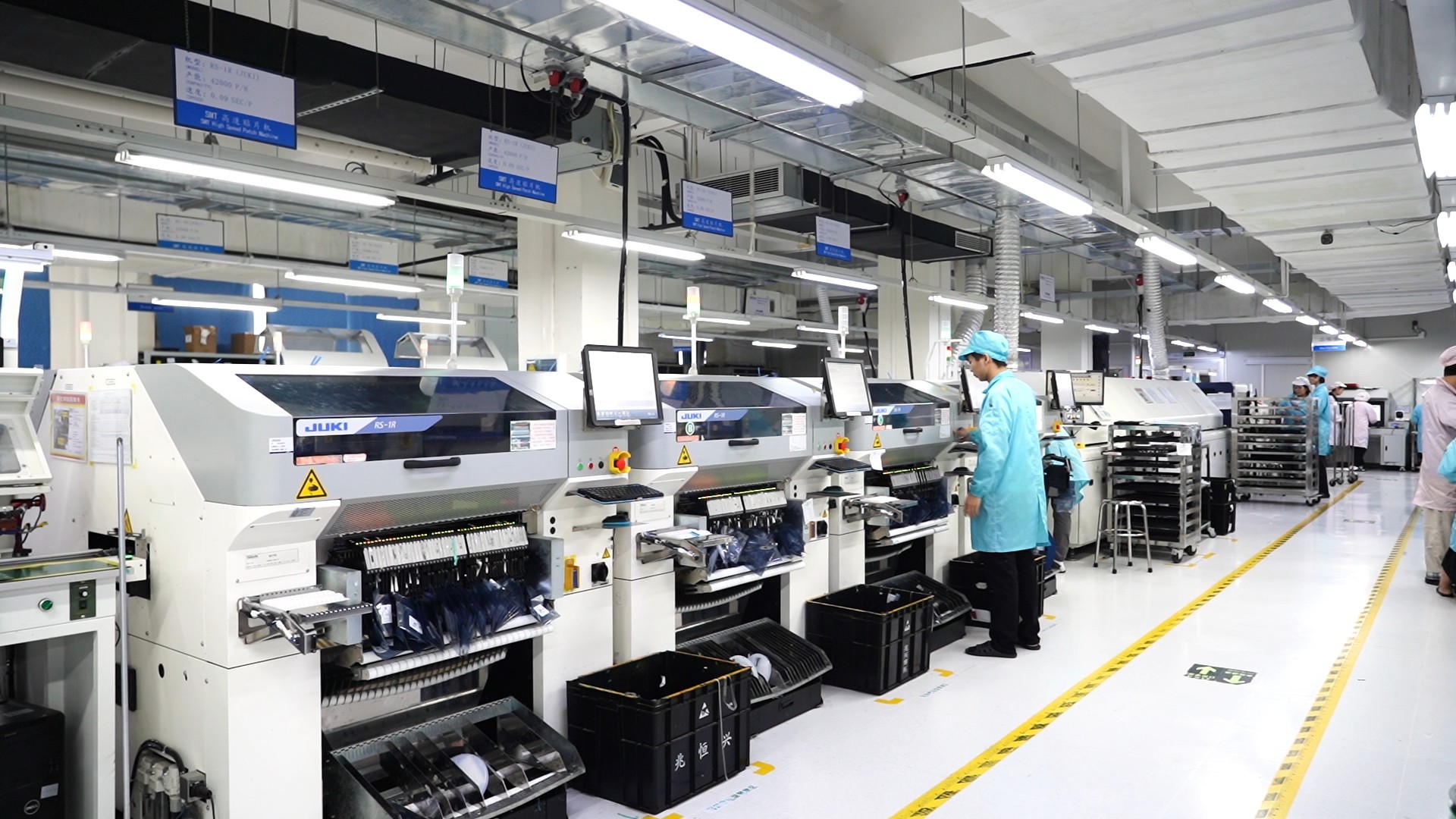
In summary, PCB conveyors play a vital role in the efficiency and effectiveness of SMT lines, particularly in printed circuit board assembly processes. Their ability to adjust speed allows for a customized approach to PCB and assembly operations, ensuring that each stage of production is optimized for performance. The integration of advanced technologies, like those offered by Bensun, enhances these systems further, making them indispensable tools in modern manufacturing.
Key Takeaways About PCB Conveyors
PCB conveyors are essential components in SMT machines, facilitating the smooth movement of SMT PCB boards throughout the assembly process. Their functionality not only supports efficient workflow but also adapts to varying production speeds required for different tasks within the PCB assembly line. Understanding their key features can significantly impact productivity and reduce potential downtime during operations.
The Future of Speed Adjustable Conveyors
The future looks bright for speed adjustable conveyors as advancements in technology continue to shape the landscape of PCB and assembly processes. With increasing demands for customization and efficiency, these systems will likely incorporate even smarter automation solutions that allow real-time adjustments based on production needs. As industries evolve, we can expect innovations that enhance compatibility with various SMT machines and improve overall workflow efficiency.
Why Choose Bensun for Your SMT Needs
Choosing Bensun means opting for quality and reliability in your PCB conveyor systems tailored specifically for SMT applications. Their intelligent shuttle conveyor models come equipped with features designed to meet the diverse requirements of printed circuit board assembly while maintaining high standards of ESD anti-static design. With a commitment to customer satisfaction and ongoing support, Bensun stands out as a leader in providing effective solutions for your SMT needs.
